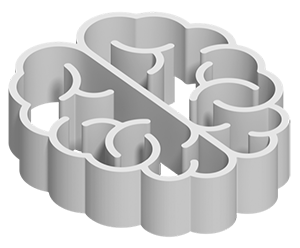Learning and design are closely interrelated. Since the advent of modernism teaching design skills has led to the development of very different experimental learning methods. And learning itself is increasingly becoming a design task. 100 years ago, the Bauhaus, too, not only proposed a visionary aesthetic program, but also revolutionized design education with its innovative pedagogy – from the fundamental study of forms and materials in the legendary Preliminary Course, devised mainly by Johannes Itten and Laszlo Moholy-Nagy, to the communal spirit of collective learning propagated by Walter Gropius, to the practical project work in close cooperation with the industry and using scientific methods that was initiated by Hannes Meyer. What does it mean today to learn design under the rapidly changing conditions of digital technologies and an ever more complex world? And how could and should we redesign learning in and for such a changing world? At the centenary of the Bauhaus DIGITAL BAUHAUS 2019: LEARNING DESIGN explores the manifold concept of learning, focusing on three main issues:
The first is PRACTICES OF LEARNING. One focus is the tension between institutions and counter-institutions, between formalized learning processes on the one hand and self-empowerment and autodidactics on the other. The amateurism of do-it-yourself as well as the figure of the dilettante who does his thing as an untrained lover marks the distance to
traditional school learning. What is to be gained if formally learned professionalism is replaced by such practices? What kind of learning medium are the millions of Youtube tutorials from children’s rooms and workshops? Practices of learning also include practices of unlearning: the acquisition of new knowledge, skills or techniques always goes hand in hand with forgetting old stuff. How does "deschooling" work, which assumes that schools obstruct learning, and how does one break up individual learning routines in order to initiate new processes of learning?
Secondly: Who or what learns at all? Today, even in the field of learning, human beings are facing competition from artificial systems: MACHINE LEARNING describes how computer programs are trained to solve tasks independently, to recognize patterns or to make predictions without having been specifically programmed for the respective task. Already today we encounter intelligent programs that learn from data, for example in purchase recommendations, social media feeds and spam filters. Deep learning is currently the most widely used machine learning method on which speech and image recognition is based. What correspondences exist between human and machine learning strategies? What are the limits of self-learning machines? Which parameters are used to shape this kind of learning? What is the concept of learning behind artificial intelligence? And will algorithms ever learn to be creative?
Thirdly and finally, we want to explore the SPACES OF LEARNING, its places and architectures. Whether it is happening in a closed classroom or outdoors, whether the method used is frontal teaching or a discussion group, whether the format is a project workshop or an online seminar – the respective environment has a significant influence on learning. This also includes all the utilized materials, from the furniture and equipment to the tools and media used for learning. Learning is always spatially-medially situated and learning environments are never simply given, but are part and parcel of the utopias and programmatic protocols of learning processes. For what kind of learning do people come together in what form of community? How do architectures change our concept of learning? Which programs and architectures of learning have shaped the education of architects and designers since the Bauhaus? And what new models are currently emerging?



